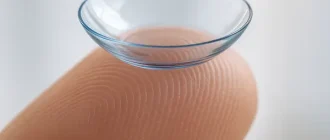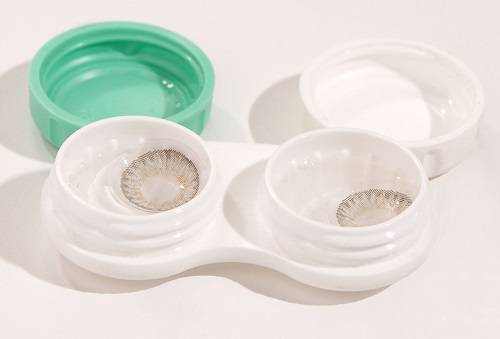Choosing the right eyeglass lenses is crucial for optimizing your vision and ensuring comfort in different environments. From everyday activities to specialized needs, lens types vary significantly. Below, we analyze the best eyeglass lenses for various situations, highlighting their benefits and drawbacks.
Comparison of Lens Types by Cost and Features
| Lens Type | Average Cost | Key Features |
|---|---|---|
| Single-Vision | $50-$150 | Simple design for near or distance vision, lightweight options available. |
| Bifocal | $100-$250 | Dual-focus for near and distance, visible dividing line. |
| Progressive | $200-$500 | Seamless multi-distance correction, no visible lines. |
| High-Index | $150-$400 | Thin, lightweight design for strong prescriptions, compatible with coatings. |
| Polycarbonate | $80-$200 | Impact-resistant, ideal for active users and children, built-in UV protection. |
This chart compares eyeglass lens types by cost and key features, helping users find the best fit based on budget and needs.
Types of Eyeglass Lenses
1. Single-Vision Lenses
Best For: General use (near or distance vision).
- Advantages:
- Simplified design tailored to a single corrective need.
- Affordable and widely available.
- Lightweight options, particularly in polycarbonate or high-index materials.
- Disadvantages:
- Limited to one focus distance.
- Frequent switching of glasses for bifocal users.
2. Bifocal Lenses
Best For: Users requiring near and distance vision correction.
- Advantages:
- Combines two prescriptions in a single lens.
- Cost-effective alternative to progressive lenses.
- Clear demarcation line for easy focus transition.
- Disadvantages:
- Visible dividing line may be aesthetically unappealing.
- No correction for intermediate vision.
- Initial adjustment period.
3. Progressive Lenses
Best For: Smooth transition across near, intermediate, and distance vision.
- Advantages:
- Seamless vision correction for all distances.
- No visible lines, offering a more natural appearance.
- Reduces the need to switch glasses.
- Disadvantages:
- Higher cost compared to bifocal lenses.
- Distortion at lens edges, especially during adjustment.
- Requires precise fitting.
4. High-Index Lenses
Best For: Strong prescriptions requiring thinner, lighter lenses.
- Advantages:
- Sleek design ideal for high prescriptions.
- Lightweight, reducing strain on the nose and ears.
- Compatible with various coatings (anti-reflective, UV protection).
- Disadvantages:
- More expensive than standard lenses.
- Potential for glare without proper coating.
5. Polycarbonate Lenses
Best For: Active individuals and children needing impact-resistant lenses.
- Advantages:
- Durable and shatter-resistant.
- Built-in UV protection.
- Lightweight and comfortable for extended wear.
- Disadvantages:
- Susceptible to scratches without anti-scratch coating.
- Lower optical clarity compared to high-index lenses.
6. Photochromic (Transition) Lenses
Best For: Indoor-to-outdoor transitions without switching glasses.
- Advantages:
- Darken in sunlight and clear indoors.
- Provides UV protection.
- Cost-effective alternative to prescription sunglasses.
- Disadvantages:
- May not darken sufficiently in cars (UV-blocking windshields).
- Slower transition in extreme temperatures.
7. Blue Light Blocking Lenses
Best For: Reducing eye strain during screen use.
- Advantages:
- Decreases digital eye strain and enhances sleep quality.
- Available with prescription and non-prescription options.
- Prevents harmful exposure to blue light.
- Disadvantages:
- Limited research on long-term benefits.
- Added cost for coating.
8. Polarized Lenses
Best For: Outdoor enthusiasts needing glare reduction.
- Advantages:
- Enhances clarity and contrast in bright conditions.
- Ideal for driving and water activities.
- Protects against UV rays.
- Disadvantages:
- Can make LCD screens harder to read.
- Unsuitable for nighttime or low-light use.
Price Range for Different Lens Types
This chart highlights the price ranges for various eyeglass lens types, from affordable single-vision lenses to premium progressive and high-index lenses, offering flexibility for different budgets and needs.
Key Factors to Consider
1. Prescription Strength
If you have a strong prescription, traditional lenses can be bulky and uncomfortable. High-index lenses, which are thinner and lighter, are especially beneficial. For example, someone with a prescription of -6.00 diopters would find high-index lenses more comfortable for daily wear and less noticeable to others.
2. Lifestyle
Your daily activities greatly influence lens choice. For instance, if you’re active or have young children, polycarbonate lenses are ideal due to their shatter-resistant properties, ensuring safety during sports or play. Office workers, on the other hand, may prefer blue light blocking lenses to reduce eye strain caused by long hours of screen exposure, improving comfort and potentially better sleep.
3. Budget
Affordability is a key factor. If you’re looking for cost-effective options, bifocal lenses are a budget-friendly choice for those needing both near and distance correction. However, for a smoother visual experience without visible dividing lines, progressive lenses, though pricier, provide superior functionality. High-index lenses, while more expensive, are worth the investment for stronger prescriptions as they significantly enhance comfort and aesthetics.
4. Coatings
Popular coatings include:
- Anti-Reflective: Ideal for individuals who frequently drive at night or work under bright lighting conditions. It reduces glare and improves night vision but adds approximately $20–50 to the cost of lenses.
- UV Protection: Essential for those with significant outdoor exposure. Shields eyes from harmful sun exposure and typically increases the lens price by $15–30.
- Scratch-Resistant: Recommended for children or active users, as it increases lens durability. The feature usually adds $10–20 to the overall cost.
Effectiveness of Lens Coatings
| Coating Type | Effectiveness (%) |
|---|---|
| Anti-Reflective | 90% |
| UV Protection | 85% |
| Scratch-Resistant | 75% |
| Blue Light Blocking | 70% |
| Water-Repellent | 65% |
This chart illustrates the effectiveness of various lens coatings, highlighting their utility in different situations, from glare reduction to UV protection and durability.
Editorial Advice
Selecting the best eyeglass lenses requires balancing functionality, comfort, and budget. Consult with your optometrist to match your visual needs with the right lens type and coatings. Invest in high-quality materials to ensure long-term satisfaction, especially if your lifestyle demands specific features like impact resistance or glare reduction.





